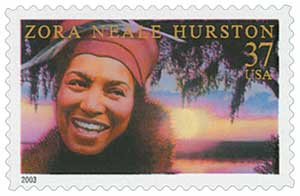
# 3748 FDC - 2003 37c Literary Arts: Zora Neale Hurston
37¢ Zora Neale Hurston
Literary Arts Series
City: Eatonville, FL
Quantity: 70,000,000
Printed By: American Packaging Corp. for Sennett Security Products
Printing Method: Photogravure
Perforations: Serpentine Die Cut 10 ¾
Color: Multicolored
Birth Of Zora Neale Hurston
When she was just three years old, Hurston’s family moved to Eatonville, Florida, one of the first incorporated all-African American towns in the US. Hurston always reflected on Eatonville affectionately and set many of her stories there as African Americans could live as they wanted.
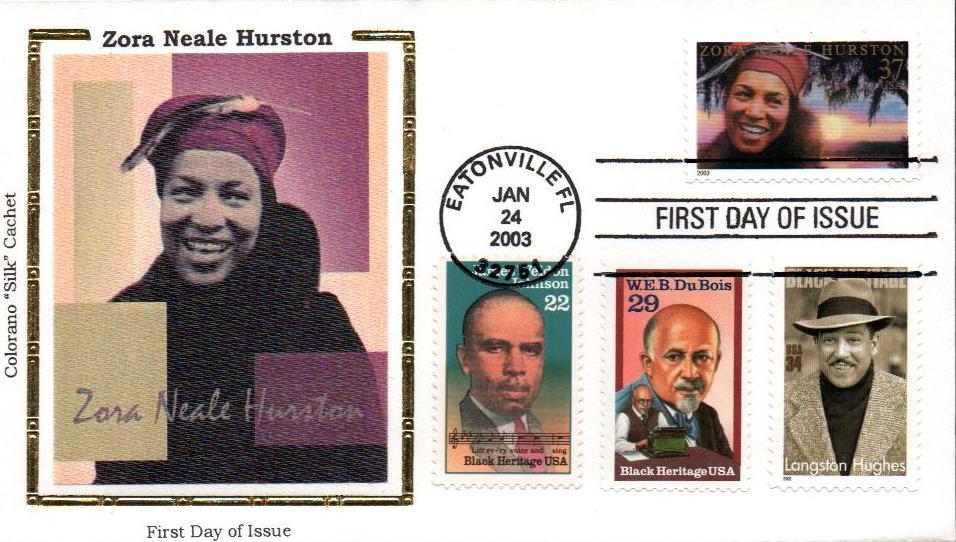
After her mother died and father remarried, Hurston didn’t get along with her stepmother and left home. She briefly attended boarding school before taking a series of odd jobs, including working as a maid to a singer of the Gilbert and Sullivan traveling troupe. By 1917, Hurston wanted to finish high school so she could attend college. She then lied about her age, saying she was ten years younger, so she could go to free public school.
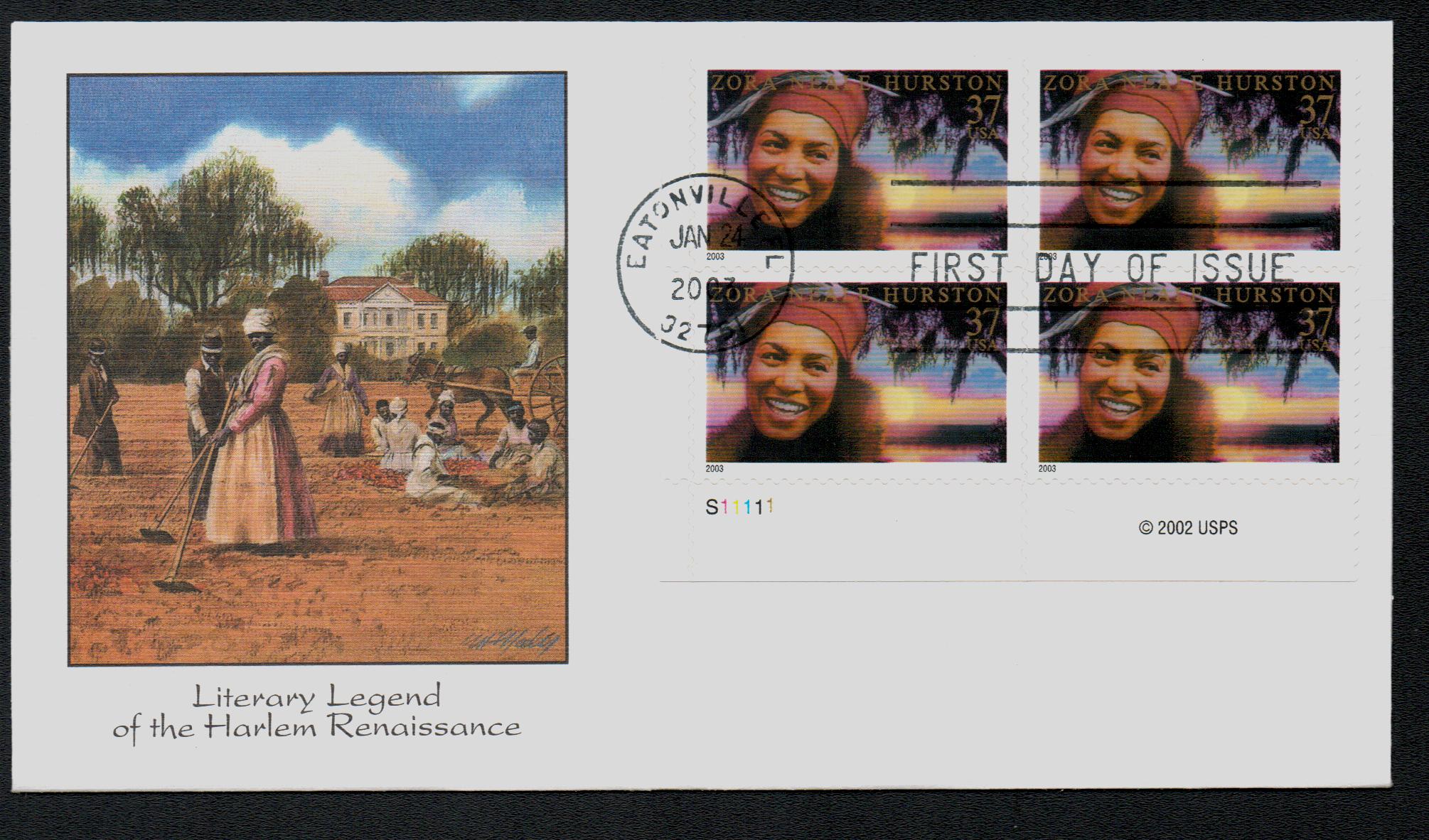
Hurston graduated from the high school division of Morgan College. From there she attended Howard University, where she helped co-found the student newspaper. Hurston left Howard in 1924 to attend Columbia University, where she was the only African American student.
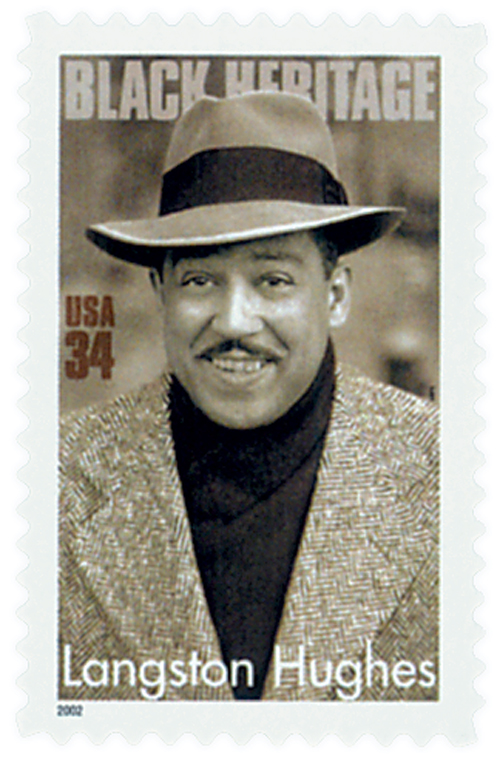
Having moved to New York City in 1925, Hurston joined the Harlem Renaissance. He short story “Spunk” was featured in The New Negro, a monumental collection of African American writing and art. She also produced the literary magazine Fire! with Langston Hughes and Wallace Thurman.
After graduating from Barnard University in 1929, Hurston moved to Florida for an anthropological study. She then traveled the Caribbean and American South to conduct research for Mules and Men. Published in 1935, it was a major work of “literary anthropology” chronicling African American folklore in timber camps.
Throughout the 1930s Hurston attempted to translate her writing for performing arts, producing a folk revue, The Great Day, and Singing Steel. These included authentic African song and dance. Hurston believed that folk stories should be dramatized in this way. She also published her first three novels during the 1930s, Jonah’s Gourd Vine, Their Eyes Were Watching God (based on her fieldwork in Haiti), and Moses, Man of the Mountain. In 1937, she received a Guggenheim Fellowship for research in Jamaica and Haiti, which resulted in the 1938 work Tell My Horse.
Hurston spent much of the 1940s and 50s writing for periodicals such as The American Mercury and The Saturday Evening Post. She published her last novel, Seraph on the Suwanee, in 1948. Hurston’s popularity waned in the 1950s, in part because of her representation of African American dialect. She died in relative obscurity on January 28, 1960, in Fort Pierce, Florida.
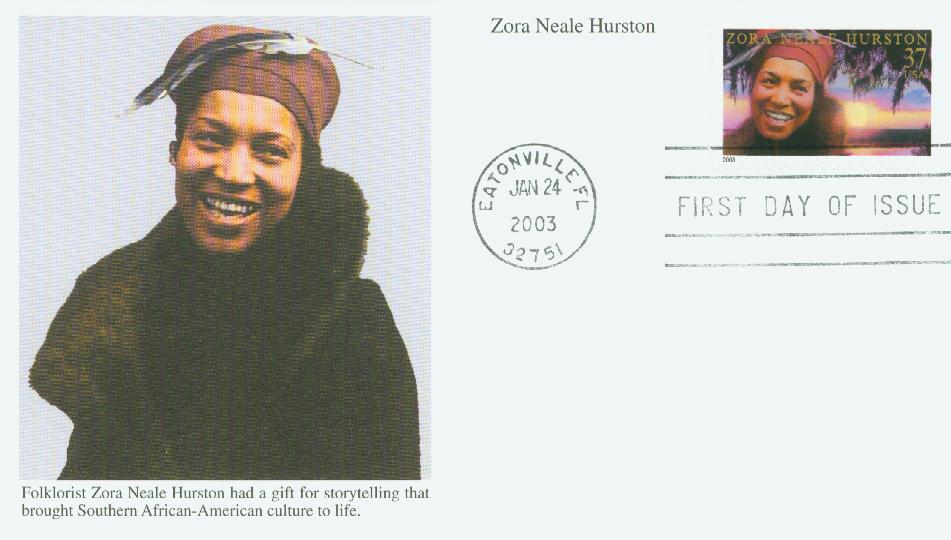
Though she drew sharp criticism during her lifetime, many modern scholars credit Hurston’s works with accurately documenting the lives of everyday working black families in the Deep South during the Depression era. She has been the subject of many honors in recent years. Eatonville hosts an annual Zora Neale Hurston Festival of the Arts and Humanities and is also home to a library and museum in her honor. She has also been inducted into the New York and Alabama Writers Halls of Fame.
37¢ Zora Neale Hurston
Literary Arts Series
City: Eatonville, FL
Quantity: 70,000,000
Printed By: American Packaging Corp. for Sennett Security Products
Printing Method: Photogravure
Perforations: Serpentine Die Cut 10 ¾
Color: Multicolored
Birth Of Zora Neale Hurston
When she was just three years old, Hurston’s family moved to Eatonville, Florida, one of the first incorporated all-African American towns in the US. Hurston always reflected on Eatonville affectionately and set many of her stories there as African Americans could live as they wanted.

After her mother died and father remarried, Hurston didn’t get along with her stepmother and left home. She briefly attended boarding school before taking a series of odd jobs, including working as a maid to a singer of the Gilbert and Sullivan traveling troupe. By 1917, Hurston wanted to finish high school so she could attend college. She then lied about her age, saying she was ten years younger, so she could go to free public school.

Hurston graduated from the high school division of Morgan College. From there she attended Howard University, where she helped co-found the student newspaper. Hurston left Howard in 1924 to attend Columbia University, where she was the only African American student.

Having moved to New York City in 1925, Hurston joined the Harlem Renaissance. He short story “Spunk” was featured in The New Negro, a monumental collection of African American writing and art. She also produced the literary magazine Fire! with Langston Hughes and Wallace Thurman.
After graduating from Barnard University in 1929, Hurston moved to Florida for an anthropological study. She then traveled the Caribbean and American South to conduct research for Mules and Men. Published in 1935, it was a major work of “literary anthropology” chronicling African American folklore in timber camps.
Throughout the 1930s Hurston attempted to translate her writing for performing arts, producing a folk revue, The Great Day, and Singing Steel. These included authentic African song and dance. Hurston believed that folk stories should be dramatized in this way. She also published her first three novels during the 1930s, Jonah’s Gourd Vine, Their Eyes Were Watching God (based on her fieldwork in Haiti), and Moses, Man of the Mountain. In 1937, she received a Guggenheim Fellowship for research in Jamaica and Haiti, which resulted in the 1938 work Tell My Horse.
Hurston spent much of the 1940s and 50s writing for periodicals such as The American Mercury and The Saturday Evening Post. She published her last novel, Seraph on the Suwanee, in 1948. Hurston’s popularity waned in the 1950s, in part because of her representation of African American dialect. She died in relative obscurity on January 28, 1960, in Fort Pierce, Florida.

Though she drew sharp criticism during her lifetime, many modern scholars credit Hurston’s works with accurately documenting the lives of everyday working black families in the Deep South during the Depression era. She has been the subject of many honors in recent years. Eatonville hosts an annual Zora Neale Hurston Festival of the Arts and Humanities and is also home to a library and museum in her honor. She has also been inducted into the New York and Alabama Writers Halls of Fame.







